Special Report
The Most Corrupt Countries in the World

Published:
Last Updated:

Many have raised concerns over newly elected President Donald Trump’s refusal to disclose his tax returns as they remain alert to signs that he may pursue policies for business reasons. Such concerns are more often voiced in relation to regimes in corrupt countries, where those in power use public resources for private interests.
No country is completely free of corruption, and while the United States is by no means the least corrupt nation, corruption levels in plenty of other countries far exceed that of the U.S. Approximately two-thirds of all countries, including the United States and other major economic powers around the world struggle to control corruption. This amounts to an estimated 6 billion people living under corrupt governments.
[in-text-ad]
24/7 Wall St. reviewed the level of perceived corruption by country on Transparency International’s 2016 Corruptions Perceptions Index. The global average score on the index is 43 out of 100. According to Transparency International’s grading framework, any score below 50 means the government is failing to address the country’s endemic public sector corruption. Somalia is the most corrupt country in the world with a score of just 10. Venezuela and Iraq round out the top most corrupt list, each tied for 10th place with scores of 17.
Click here to see the most corrupt countries in the world.
The most corrupt countries share several notable characteristics: violent conflicts, high dependency on foreign aid, income inequality and rampant poverty, as well as heavy oil dependence.
One of the most important safeguards against government corruption is accountability. When a government is held accountable for its actions, officials are less likely to circumvent or break the law, and they are more likely to be caught. According to TI, community monitoring efforts around the world have in some cases led to “the detection of corruption, reduced leakages of funds, and improved the quantity and quality of public services.” Recently in the United States, for example, Trump issued a gag order on the Department of Health and Human Services and Environmental Protection Agency that prevents employees from the agency from communicating with members of Congress. After an organized public backlash, however, the order was rescinded. In many of the most corrupt countries, organized resistance is less effective.
One reason the U.S. government is accountable to its people is taxation. Most federal expenditure is taxpayer-funded, so Americans want and demand to know how their money is being spent. In many of the world’s poorest countries, by contrast, a large share of the government’s budget comes from foreign aid. As a result, citizens may be less informed about their government’s finances, and less aware if funds are misused.
Corrupt governments also avoid accountability through secrecy and limiting the public’s access to information. According to TI, “Access to information increases the responsiveness of government bodies, while simultaneously having a positive effect on the levels of public participation in a country”. In countries where public knowledge of government action is limited, officials may be more likely to break the law and less likely to be caught.
While corruption problems can seem to pale in comparison to the devastation caused by war, the two often go hand in hand. Many of the most corrupt countries are also among the most violent nations on the planet. Afghanistan, Iraq, Somalia, Sudan, South Sudan, and Yemen, which have each struggled with internal conflict and war, are also among the most corrupt nations on this list.
Corruption can contribute to unrest in a nation, and it seems to flourish in such conditions to the point of becoming normal. Afghanistan is a notable example. In 2015, appointees under former Afghan President Hamid Karzai allegedly fabricated the number of schools in the country in order to obtain more funding from international aid. In a country such as Afghanistan preoccupied with security concerns, institutions often fail to function properly. As a consequence, bribes and extortion are common not just for unchecked public officials, but also for ordinary citizens seeking access to basic services.
Nearly all of the most corrupt countries are also quite poor. Of the 11 corrupt countries, the World Bank publishes GDP per capita data in eight. Of those eight countries, GDP per capita exceeds $5,000 in just three. By contrast, U.S. GDP per capita is $56,084, 11th highest of countries reviewed.
Some of the world’s poorest countries are also some of the world’s most oil-rich countries. Oil and gas companies, both private multinational and government-owned corporations, rarely publish details of their operations in these countries, and often protect the identities of their equity holders and subsidiaries. This is how corrupt government leaders are frequently able to hide stolen funds.
In order to identify the most corrupt countries in the world, 24/7 Wall St. reviewed the 11 countries with the 10 lowest index scores from Transparency International’s 2016 Corruption Perceptions Index of 176 countries. National economic data came from the International Monetary Fund (IMF). GDP per capita figures are based on purchasing power parity. Literacy rates, Gini index scores, and poverty rates are from the World Bank. All data are as of the most recent period available.
These are the most corrupt nations in the world.
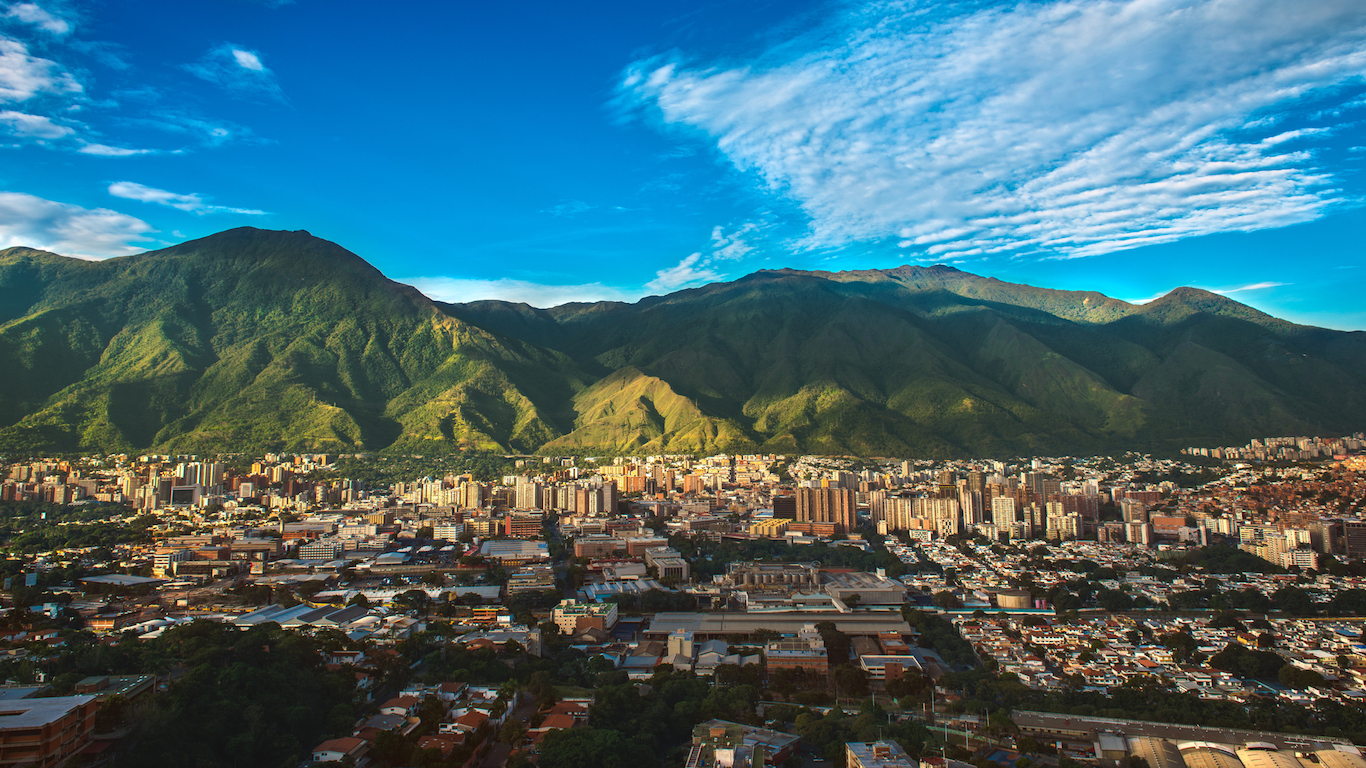
11. Venezuela
> Corruption index score (0-100): 17 (tied-10th worst)
> Population: 31.0 million
> Region: South America
> GDP per capita: $17,949.87
Based on perceptions among residents and public officials, as well as expert evaluations, Venezuela is tied with Iraq as the 10th most corrupt country in the world. Some of the world’s most oil-rich countries are home to some of the world’s poorest people — a counter-intuitive pattern but also a strong indication of corruption. Venezuela’s vast oil reserves, relatively poor population, and high income inequality may help explain the country’s low ranking on the corruption index. The oil and gas sector in Venezuela accounts for approximately 25% of GDP, which at $542.2 billion makes the Latin American country one of the largest economies in the world. Despite the country’s wealth, the population is mostly poor. While residents are not as poor as residents of most sub-Saharan African nations, some estimates peg Venezuela’s poverty rate as high as 76%.
High corruption frequently leads to human rights abuses. Under former President Hugo Chávez and now President Nicolás Maduro, arbitrary arrests, beatings, denial of basic due process, censorship, and other abuses have been widely reported — according to Human Rights Watch.
[in-text-ad]
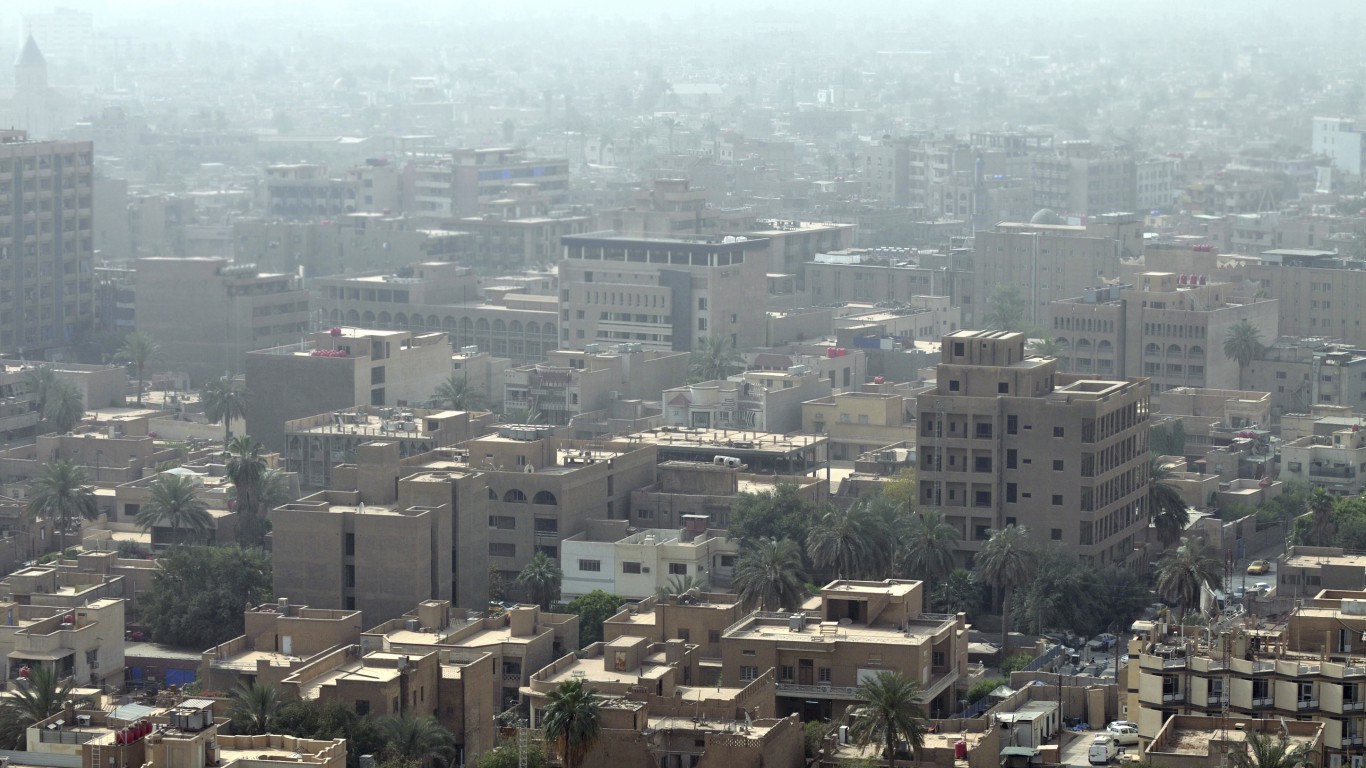
10. Iraq
> Corruption index score (0-100): 17
> Population: 36.1 million
> Region: Middle East
> GDP per capita: $15,784.73
As is the case in many of the most corrupt countries, war-torn Iraq also struggles with excessive human rights abuses. While corrupt government officials may seem to be among the least of the country’s problems, corruption can perhaps help explain the ongoing crises in Iraq. According to Transparency International, the authoritarian regime of Saddam Hussein contributed substantially to current levels of corruption. Corruption levels stayed the same and in some cases worsened after Hussein’s removal during the U.S.-led coalition invasion in 2003.
Like a number of other countries on this list, Iraq’s economy depends heavily on oil. Approximately 90% of government revenue comes from the country’s oil sector. However, due to the high corruption, it is likely that most of these funds do not go to improve conditions in Iraq. Further, the heavy reliance on oil revenue increases Iraq’s vulnerability to corruption and increases the risk of instability and unrest during global oil price fluctuations.
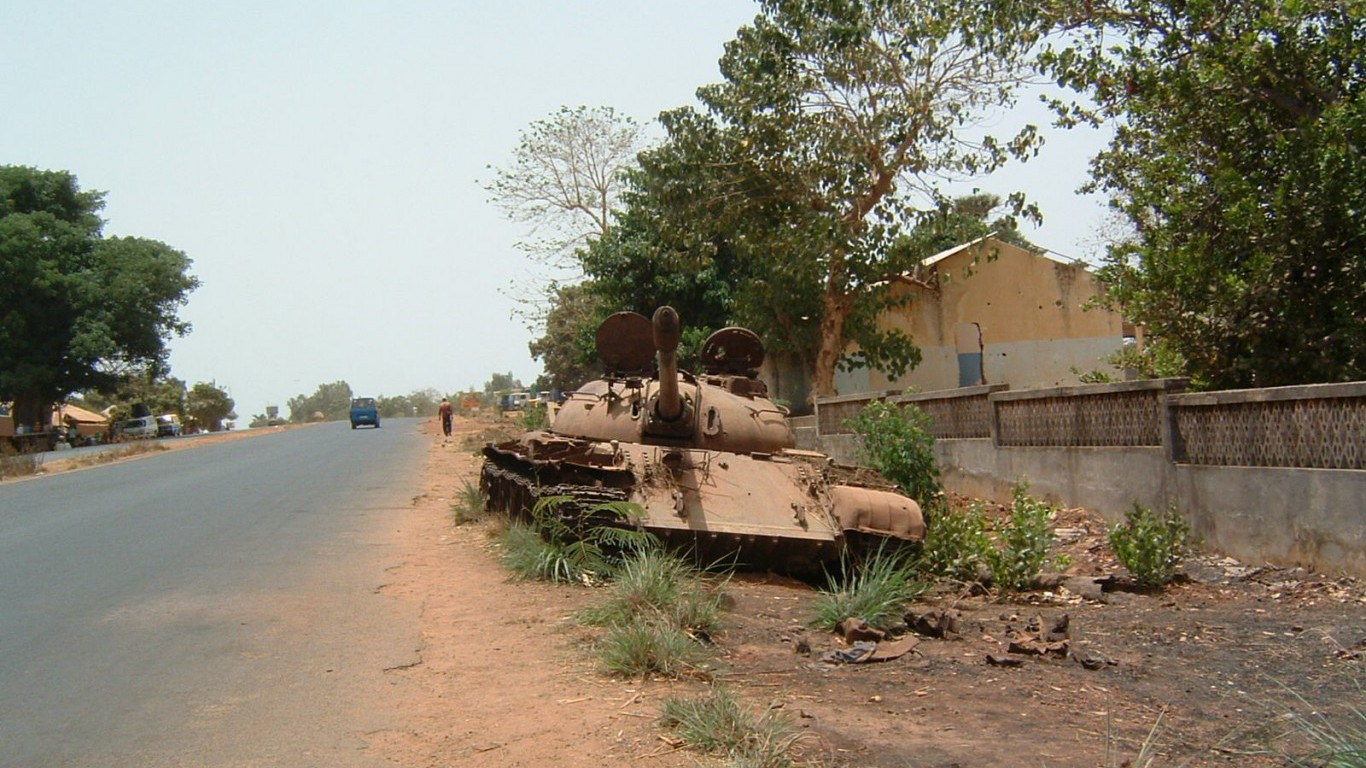
9. Guinea-Bissau
> Corruption index score (0-100): 16
> Population: 1.8 million
> Region: Sub-Saharan Africa
> GDP per capita: $1,458.69
Guinea-Bissau has a long history of corruption. Located on the the western coast of Africa, Guinea-Bissau is one of the most active drug ports in the world and a major transit point for illegal narcotics moving from Latin America to Europe. Like oil in other sub-Saharan African nations, the drug trafficking industry led to corruption in the highest levels of the country’s government. The drug trade is largely facilitated by the Guinea-Bissau military. In a successful coup in 2012, the military overthrew the president — no Guinea-Bissauan president has ever finished his term in office. Following the coup, drug trafficking in the country increased even further, leading the U.N. Office on Drugs and Crime to refer to Guinea-Bissau as the world’s only true narco state.
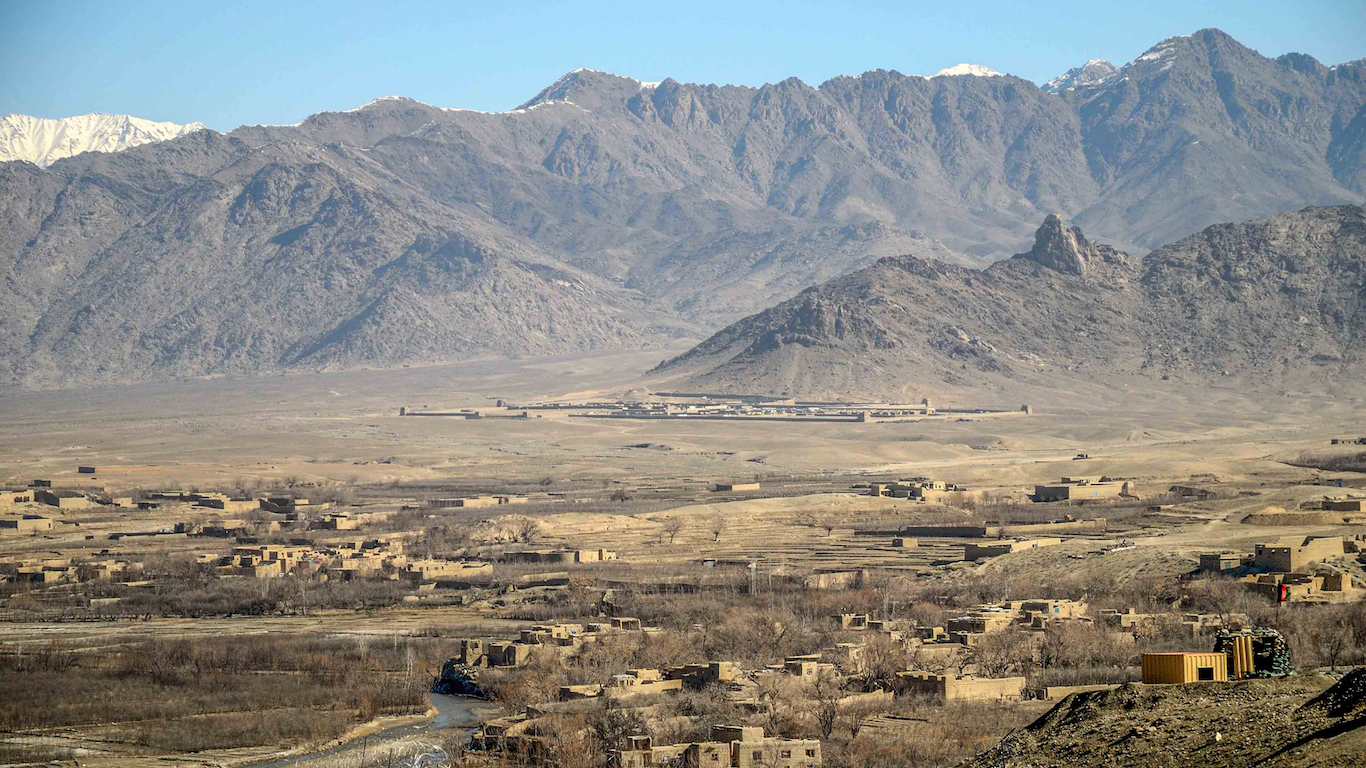
8. Afghanistan
> Corruption index score (0-100): 15
> Population: 32.7 million
> Region: Asia
> GDP per capita: $1,946.62
Corruption continues to exacerbate the ongoing conflict in Afghanistan and obstruct the effectiveness of international aid. The ongoing struggle between Taliban and government forces over territory has led to thousands of civilian casualties and likely more than 1 million displaced citizens.
In October 2016, the international community agreed to a four-year $12 billion aid package to the war-torn country. The aid is desperately needed, but due to poor management, wasteful spending, and corruption, a substantial portion of previously allocated funds have disappeared. According to one estimate by Transparency International, $1 billion out of every $8 billion in aid is lost to corruption. Heavy dependence on a single source of revenue such as foreign aid also tends to lower a government’s accountability to its citizens.
[in-text-ad]
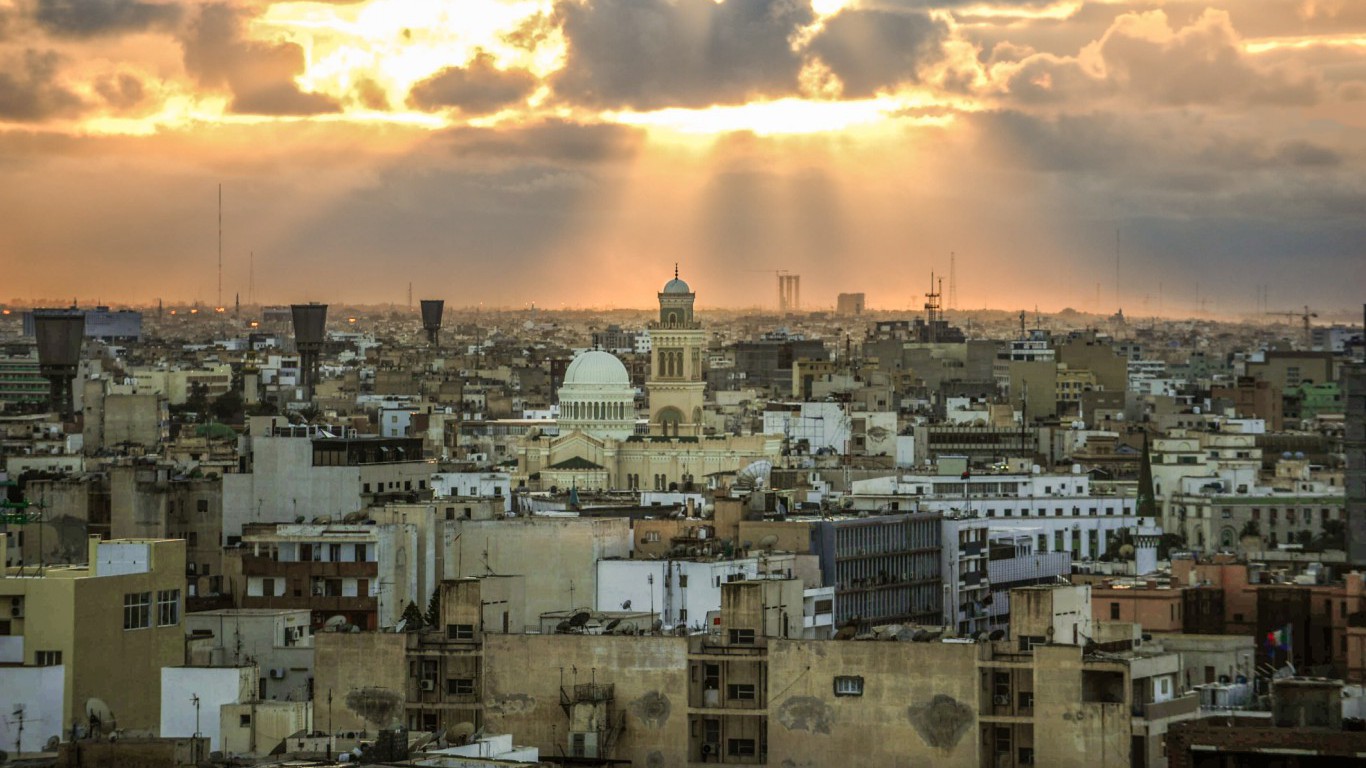
7. Libya
> Corruption index score (0-100): 14 (tied-5th worst)
> Population: 6.4 million
> Region: North Africa
> GDP per capita: $15,667.97
After more than four decades in power, Libyan dictator Muammar Gaddafi was ousted by the country’s rebel forces with assistance from NATO allies. The collapse of Gaddafi’s regime left a power vacuum in Libya, with multiple violent factions clashing to assume control of the state. While the country managed to establish an internationally recognized interim government that successfully executed the nation’s first peaceful transition of power in modern history, the coalition has since disbanded.
With the absence of a unified central government, arbitrary arrests, unlawful killings, and other corrupt practices are less the acts of crooked government officials and more wartime skirmishes of rival groups competing for power. The violence has displaced hundreds of thousands of Libyans. More recently, the country also became a hotbed for ISIS operations.
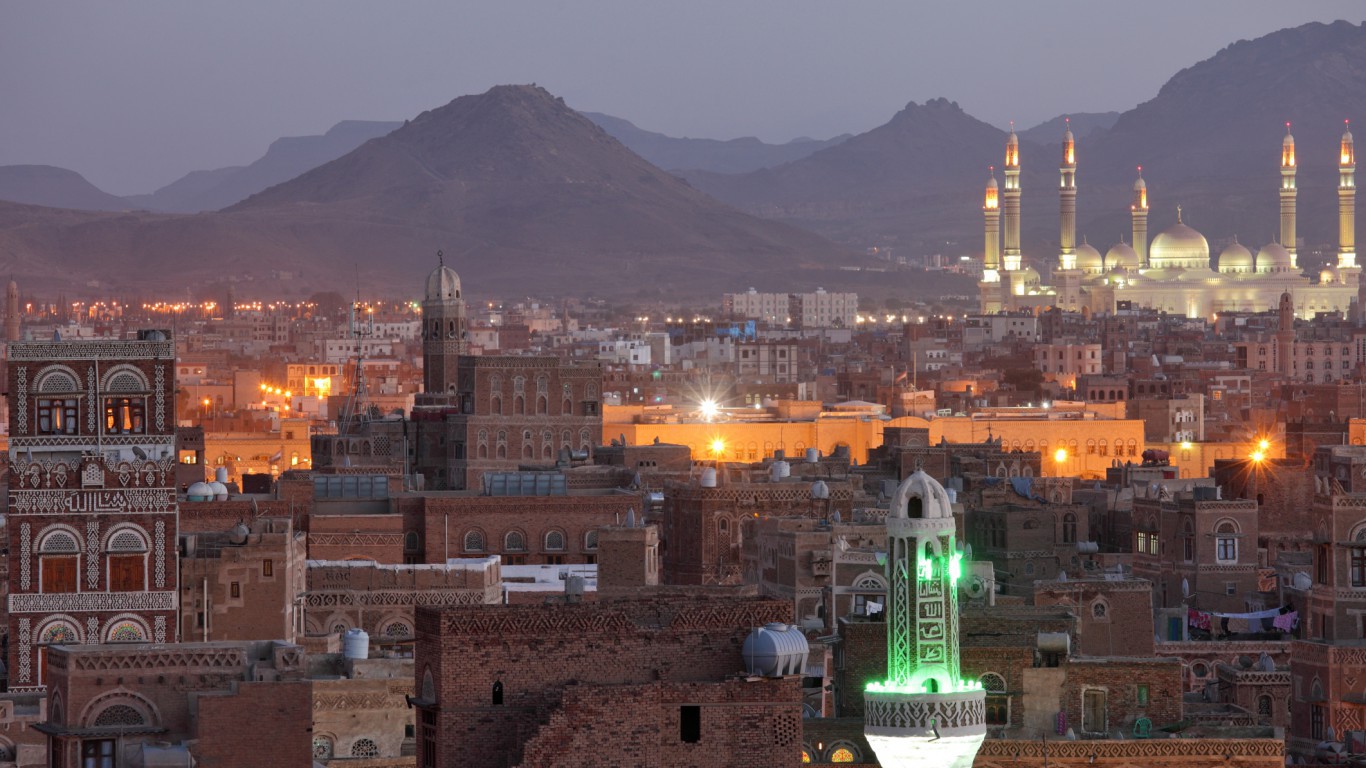
6. Yemen
> Corruption index score (0-100): 14 (tied-5th worst)
> Population: 29.1 million
> Region: Middle East & North Africa
> GDP per capita: $3,792.58
With a GDP per capita of $3,793, Yemen is the poorest Arab nation and a major recipient of foreign aid. Residents are under near constant threat of violence from the government, Islamic radicals, as well as U.S. and Saudi Arabian air strikes. Excluding contributions from non-governmental organization, Yemen received over $400 million in humanitarian aid from the United States in the government fiscal 2016. Yemen, which became a hotbed of terrorist activity since protests and conflict erupted in 2011, was a frequent target of the U.S. and Saudi Arabian militaries under President Barack Obama’s administration. In the first covert counter-terrorism raid under President Trump on an al Qaeda base in Yemen, one American commando was killed. The raid is also reported to have killed 10 women and children.
In such conditions of turmoil, some level of corruption is virtually guaranteed. In one high profile example, former Yemeni President Ali Abdullah Saleh was accused in 2015 by the UN Security Council of stashing as much as $60 billion through corrupt practices over the course of his more than 30 years in power.
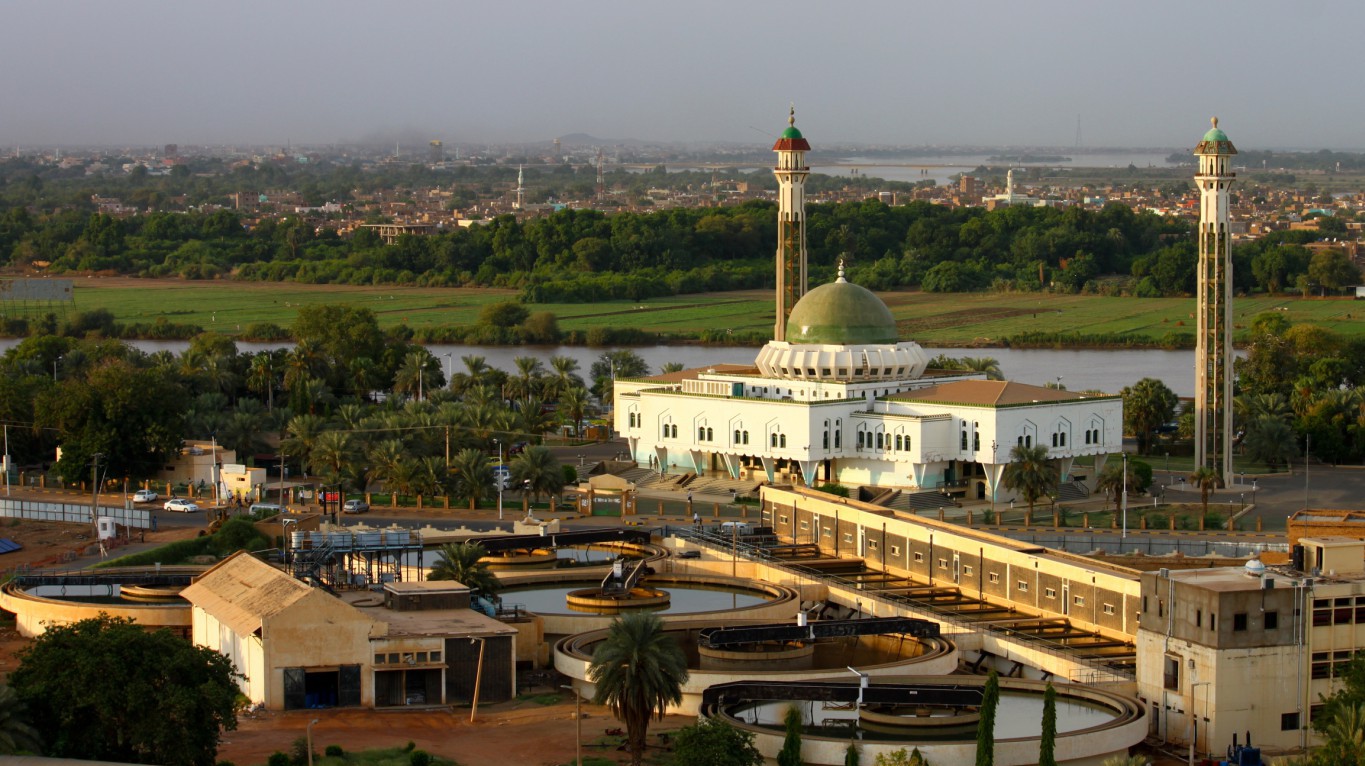
5. Sudan
> Corruption index score (0-100): 14
> Population: 39.6 million
> Region: Sub-Saharan Africa
> GDP per capita: $4,271.94
Sudan gained independence from Britain in 1956, and it has since been locked in a bloody conflict over ethnic, religious, and economic tensions. The country’s current leader, President Omar al-Bashir, took power in 1989, after he led a successful military coup against the sitting democratic government. With the aim of dissolving the democratic form of government he believed was responsible for Sudan’s internal strife, al-Bashir established an oppressive authoritarian regime. Al-Bashir banned trade unions, political parties, and independent newspapers, and instituted a system of law based on Islamic principles.
Sudan has one of the least transparent governments today, and many international watchdog organizations believe the al-Bashir administration is rife with embezzlement, patronage, and some of the worst human rights abuses on the planet.
[in-text-ad]
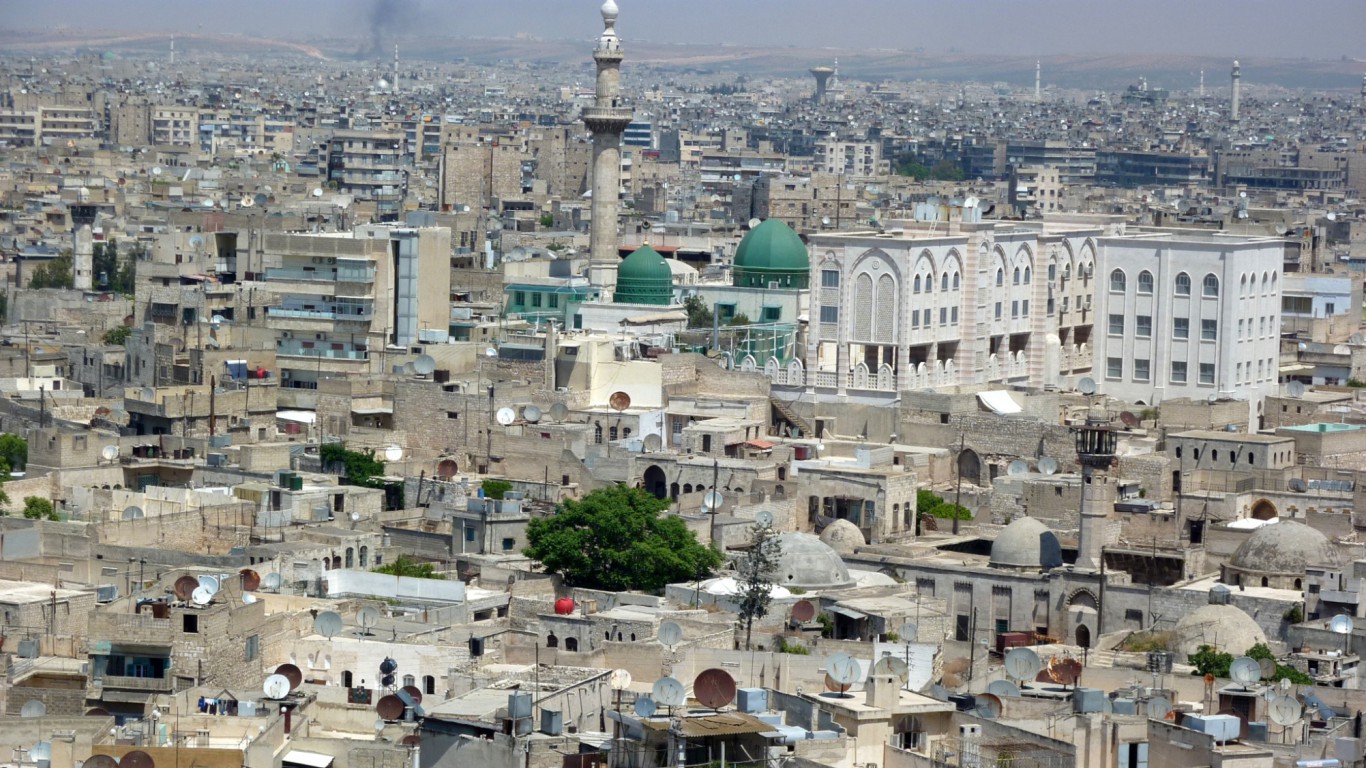
4. Syria
> Corruption index score (0-100): 13
> Population: N/A
> Region: Middle East
> GDP per capita: N/A
Syria is currently in the midst of a catastrophic civil war that in the past six years has left over 10 million Syrians displaced and more than 250,000 dead. While there is little consensus among experts as to the principal cause of the fighting, most agree an underlying catalyst was the popular uprising against the corrupt regime of President Bashar al-Assad during the Arab Spring protests.
Since inheriting the presidency from his father in 2000, al-Assad has largely maintained the authoritarian system of rule in place since his family first took power in 1970. Despite early promises of reform, al-Assad continued to censor Syria’s media and hold onto power through elections believed to be rigged. Al-Assad redoubled his authoritarian methods when he faced opposition in the Arab Spring, meeting dissent with violence in a murderous campaign that has ultimately accounted for the majority of casualties in the ongoing conflict.
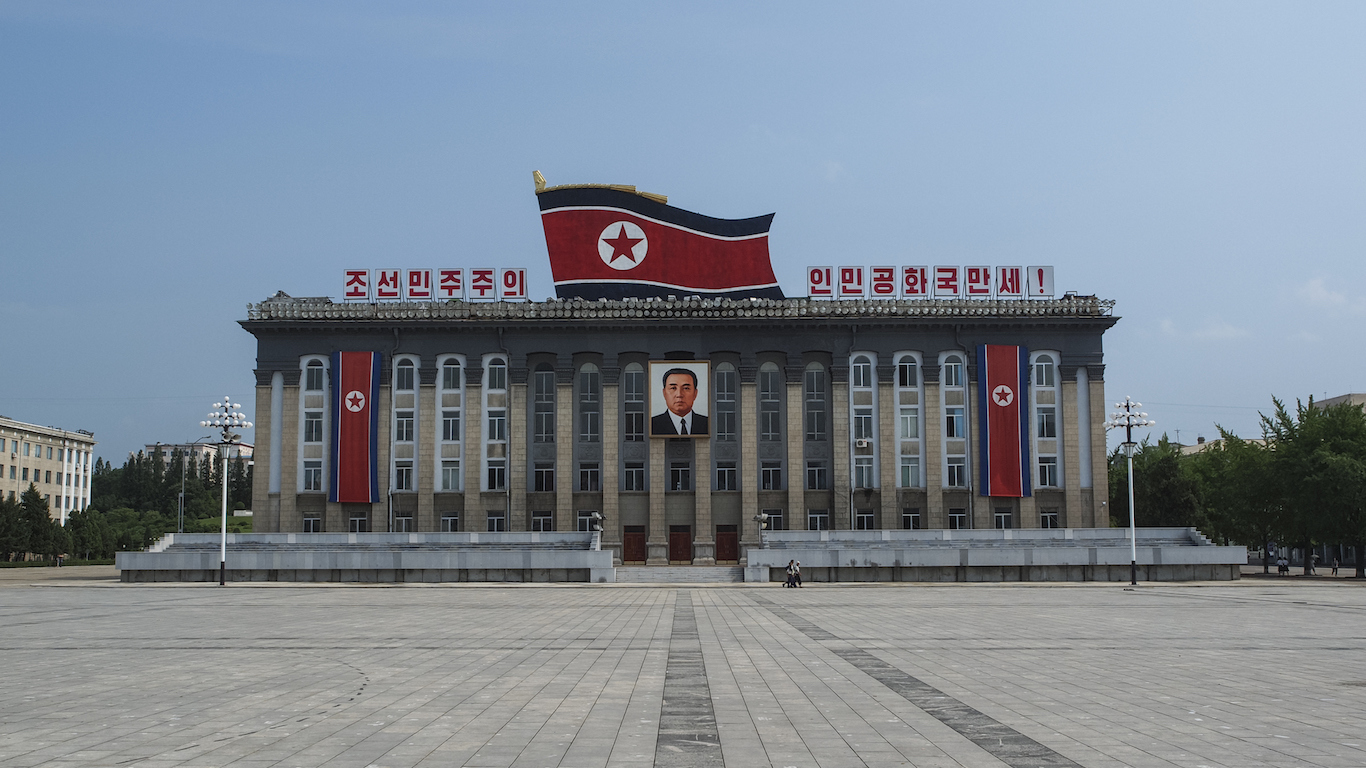
3. North Korea
> Corruption index score (0-100): 12
> Population: N/A
> Region: Asia & Pacific
> GDP per capita: N/A
One of the most secretive countries in the world, the true extent of government corruption in North Korea is largely unknown. However, investigations by international watchdog organizations have revealed a repressive government devoid of independent media, religious freedom, or any legal means of civil dissent. Power is largely maintained by fear — human rights abuses in the country are “without parallel in the contemporary world,” according to Human Rights Watch.
While governmental corruption in sub-Saharan Africa and Middle Eastern countries pose threats threat to the well-being and lives of the region’s population, crooked officials in North Korea may benefit citizens. For example, North Koreans may face severe punishment for accessing foreign media. However, many are able to do so by bribing police officers, who earn such small salaries that accepting bribes is, according to some experts, almost necessary to live.
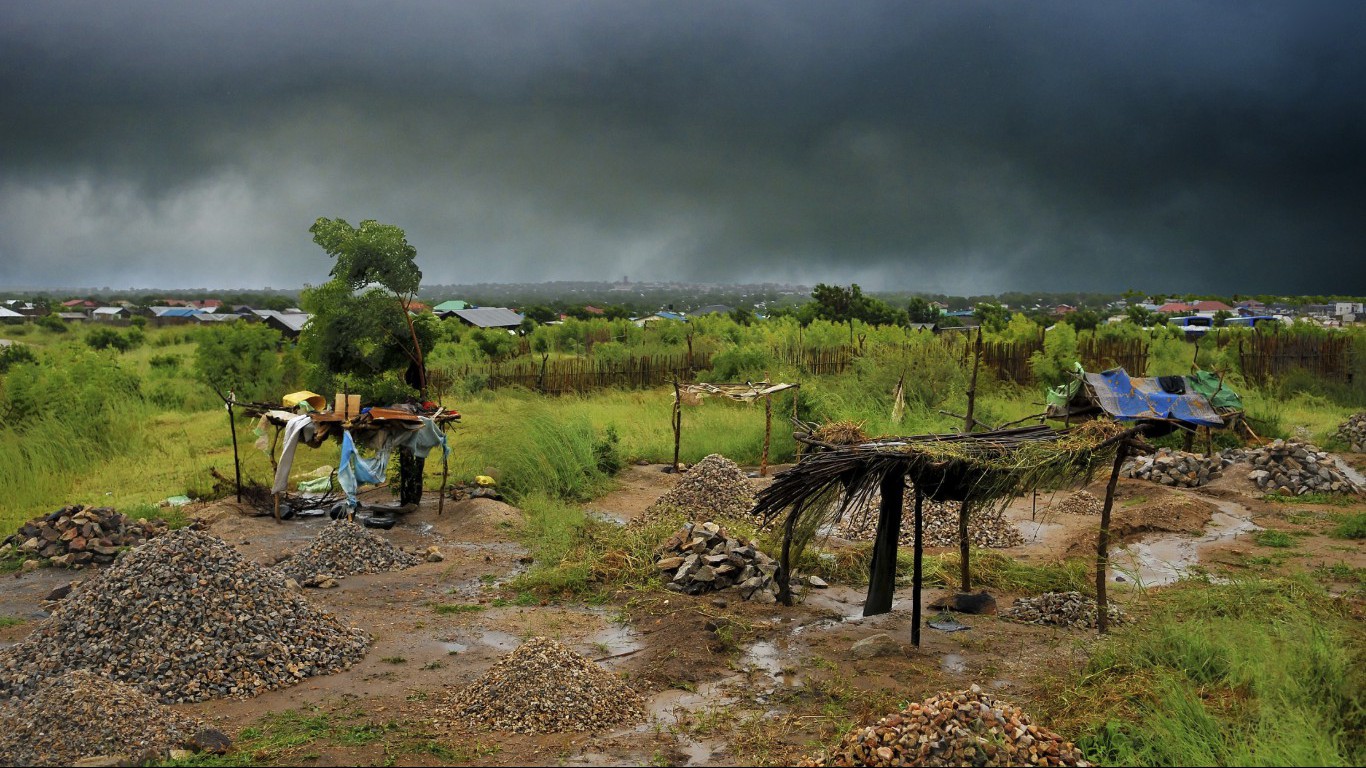
2. South Sudan
> Corruption index score (0-100): 11
> Population: 12.5 million
> Region: Sub-Saharan Africa
> GDP per capita: $2,065.48
South Sudan successfully seceded from Sudan in 2005 after a bloody conflict over religious, economic, and political tensions claimed the lives of an estimated 2 million people over two decades. Not long after establishing sovereignty, South Sudanese leadership had established a government rife with corruption at every level. The nation lacks any major regulations to prevent senior officials from embezzling government funds. Between 2005 and 2012, an estimated $4 billion was stolen from South Sudan’s coffers.
South Sudan has been involved in border conflicts and civil war for nearly as long as the country has been fully sovereign. The fighting has claimed tens of thousands of lives. According to advocacy group The Sentry, which investigated resources used to fund the South Sudanese war effort, leaders of the warring factions profit heavily from the conflict.
[in-text-ad]
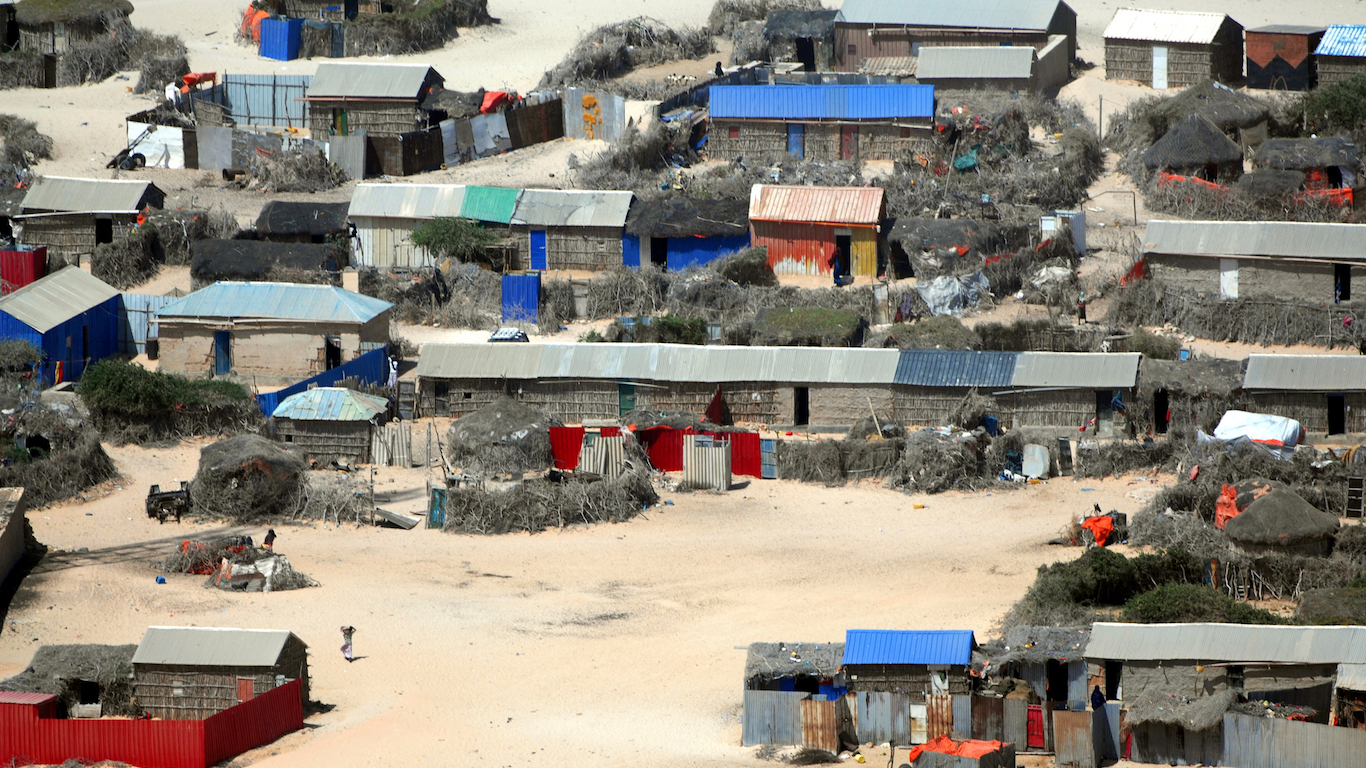
1. Somalia
> Corruption index score (0-100): 10
> Population: N/A
> Region: Sub-Saharan Africa
> GDP per capita: N/A
For more than two decades after dictator Mohamed Siad Barre’s regime was overthrown in 1991, Somalia existed without a unified central government. The fragmentation allowed corruption to penetrate virtually every sector and level of the government, instilling a system of patronage and embezzlement common in many war-torn countries. Somalia’s reliance on foreign aid for revenue, as opposed to taxation, contributes to a higher degree of secrecy in the government’s management of public funds. An estimated $130 million in Somalia food aid went unaccounted for in 2009 and 2010, for example.
Somalia established an internationally recognized federal government in 2012 and has since made small steps towards stability. The country may have an opportunity to transform its economy as it explores offshore hydrocarbon activity that could yield crude oil. For many sub-Saharan African nations, however, oil wealth has been a source of corruption and, in many cases, a catalyst for the rise of violent authoritarian regimes. As exploration continues, Somalia must decide how best to welcome a potentially beneficial but also destabilizing petroleum industry.
Retirement planning doesn’t have to feel overwhelming. The key is finding professional guidance—and we’ve made it easier than ever for you to connect with the right financial advisor for your unique needs.
Here’s how it works:
1️ Answer a Few Simple Questions
Tell us a bit about your goals and preferences—it only takes a few minutes!
2️ Get Your Top Advisor Matches
This tool matches you with qualified advisors who specialize in helping people like you achieve financial success.
3️ Choose Your Best Fit
Review their profiles, schedule an introductory meeting, and select the advisor who feels right for you.
Why wait? Start building the retirement you’ve always dreamed of. Click here to get started today!
Thank you for reading! Have some feedback for us?
Contact the 24/7 Wall St. editorial team.